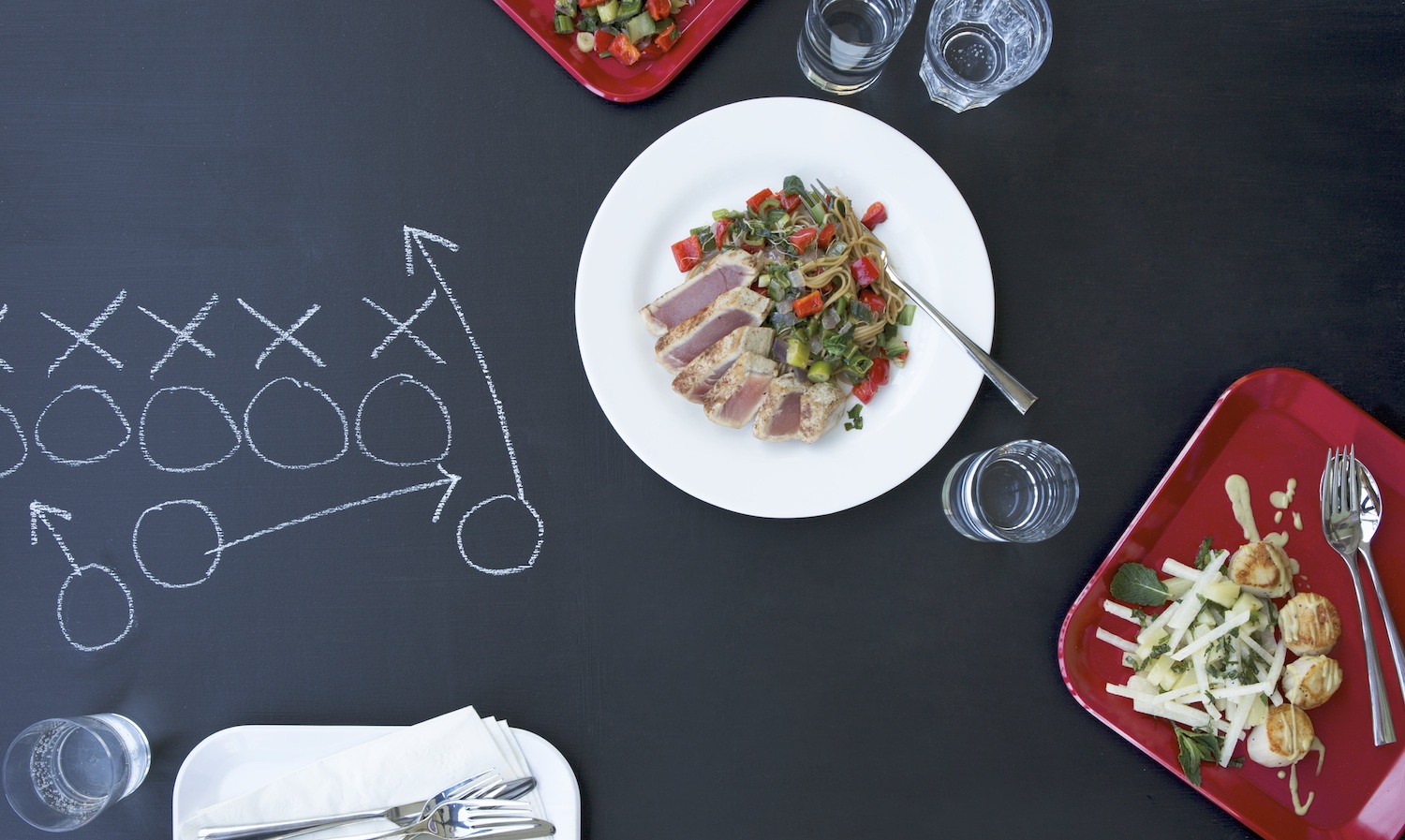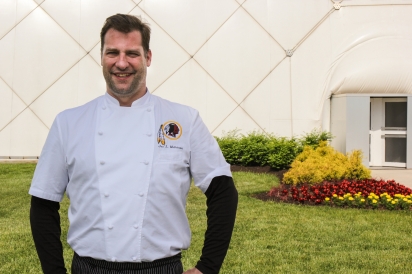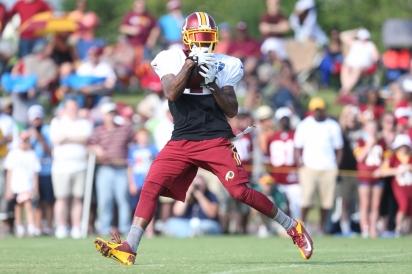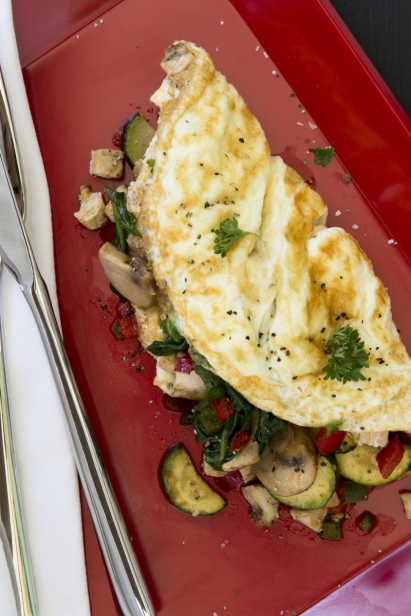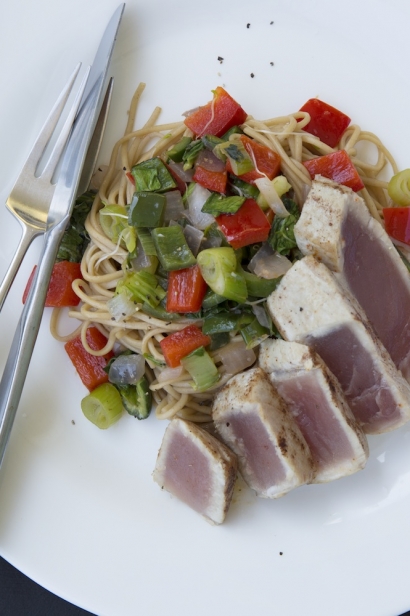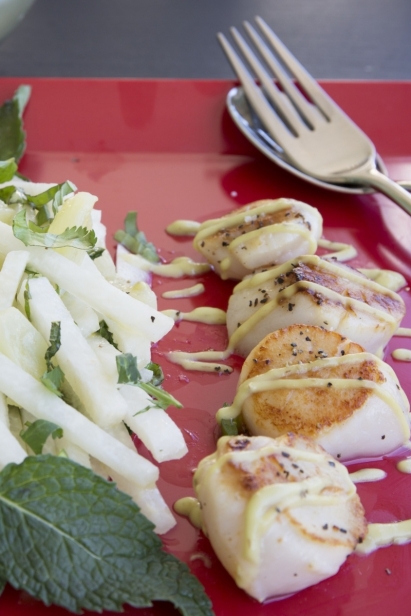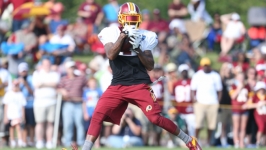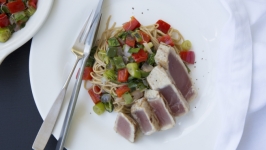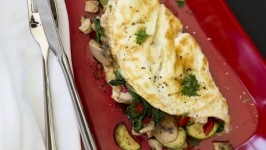Game Changer: Transforming the NFL's Diet
The fish was a surprise for everyone.
Beef? Of course. Chicken? Sure. But even the chef never expected seafood would go over so big. Purchased in the New York fish market in the dead of night and delivered fresh a few hours later to the Ashburn, Virginia, kitchen of Chef Jon Mathieson, the fish is prepared, plated and served for lunch—some three 300 pounds of it every week
“I never thought these guys would eat as much fish as they do,” Mathieson says.
“These guys” aren’t your standard suburban lunchtime crowd, nor anything like the fine-dining clientele that Mathieson once served at restaurants such as the four-star Lespinasse and Le Bernardin in New York, and other critically acclaimed restaurants in Massachusetts and the D.C.-Metro area. These guys are professional football players, and after some 25 years working as a classically trained French chef, in 2013 Mathieson took on the job of feeding them in the newly created role of executive chef for the Washington Redskins.
From Fine Dining to Field Goals
The career choice might seem like something of a head-scratcher—from foodies to football players? After all, this is the sport of man-mountains, some of whom take in as many as 6,000+ calories a day in season. This is the terrain of sweat and brawn and servings by the platter, not exquisite constructions and confits. Right?
That’s exactly why Mathieson took the job. Sports nutrition is an exploding field, with everyone from amateur triathletes to international sports stars turning a keen eye to the link between diet and performance. Arguably, however, the NFL has been late to the table. Typically, teams outsource the work of feeding their athletes to caterers, often the same ones that serve their stadium concessions. And while players might get general advice on making good food choices, as recently as 2014 the Miami Dolphins made the news as only the sixth team in the league to add a full-time nutritionist or dietitian to its staff.
When the Redskins added a fully equipped, commercial-quality kitchen to the team’s Ashburn facilities in 2013, Mathieson, a former competitive swimmer, couldn’t resist the opportunity.
“This is a new challenge for where food is going. People want to eat healthy,” says Mathieson. It is true that “healthy eating” still suffers something of an image problem, the province of moralizers and ascetic self-denial. Could you marry nutrient-dense superfoods with French cooking’s aesthetic of flavor and pleasure, and still meet the demands of fueling 300-pound linebackers at the top of their game? Get those guys to line up for quinoa and kale, and you’d really be onto something.
“To work with athletes at the peak of their careers, to develop food for them that hopefully translates into a positive season, and to have a fabulous kitchen as good as any restaurant in the country—as a chef, why would I turn that down?” says Mathieson. “And what better place than the NFL, where so few teams are doing this now? I wanted to get in on the ground floor.”
Chef’s Playbook
Mathieson arrived four weeks into the fall season in 2013, bringing with him Sous-Chef Connor McGuire but otherwise stepping into a new kitchen with an unfamiliar staff. “I had to hit the ground running,” he says.
And Mathieson had a new kind of professional partner to work with: dietitian Rob Skinner, who’d also just joined the team’s staff. Mathieson brought an intimate knowledge of the art of food, while Skinner—with degrees in nutrition, education and exercise science, and a career that had included working with Navy SEALS and the Atlanta Falcons—laid down the science. Skinner would build the nutritional framework for feeding the players; Mathieson would develop the menus and recipes.
“It’s been a great partnership between Jon and me,” says Skinner, as the two enter their third season together. “I tell him what they need to eat, and he makes it taste good. You give him a canvas, and he’ll create.”
Mathieson admits that there was learning curve, however. “At the beginning, I tried to do it too much like a restaurant,” he says. “I came in a little too aggressively with styling and ingredients. I made vegetable combinations. I tried sauces and garnishes and chutneys. I made it a little too fancy.”
Unlike the diners who treated themselves to Mathieson’s restaurants, the players who sat down to his meals as part of long days of training, meetings, conditioning, treatments and practices “just wanted to pick up and go,” he says. “They have so much going on, and this is their break, when they get to turn off their focus and just enjoy.”
“I learned quickly,” he adds. “We found our niche in how they like to eat and we try to work within those parameters.”
Lean Mean Fish-Eating Machines
The players have learned too. Skinner has educated them about nutritional choices, about understanding what they eat and how it can affect their bodies. Mathieson, meanwhile, has coaxed players into trying foods they’d never even heard of. Farro? Soba noodles? Barley?
When Mathieson introduces something new, he or Skinner is up front talking with the players, explaining what’s being served. “They trust me,” says Mathieson. “They will try it.”
Fullback Darrel Young is a case in point. Citing Mathieson’s salmon as his favorite dish, he says, “I can’t even pronounce all the different fish Chef serves, because I wasn’t a big fish guy, but I am now. I never understood that healthy food can be so good, just as good as fast food, but now I do.”
Defensive end Frank Kearse says that after playing for several teams, he knows what he has with the Redskins is a unique benefit that is making a measurable difference for the players. “A lot of times guys don’t know what to eat if they are trying to lose or gain weight. Or they think if they eat healthy, it’s not going to taste good.” But with Skinner and Mathieson on hand explaining and educating, preparing and serving, “This past year alone I have lost 5% body fat and put on seven pounds of muscle,” he says. “I truly believe my eating and nutrition is a big factor in that.”
Tight end Logan Paulsen agrees that he’s seen the results too. He’s both grown leaner and put on more muscle, and “I’m moving better than I ever have,” he says. “I think my success as an athlete is directly correlated with what I put into my body, and they’ve done a great job of making sure that it’s really healthy and making me better.”
Mathieson believes the Redskins are setting a precedent that other teams will soon be eager to follow. “Being one of the guys who got in on the ground floor, I would love to see it grow,” he says. “I wouldn’t be surprised if in five years every team in the league had a chef.”


